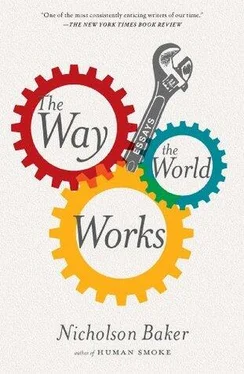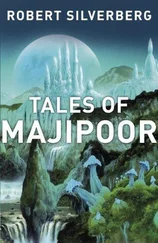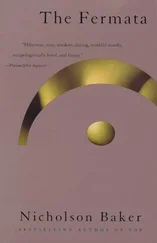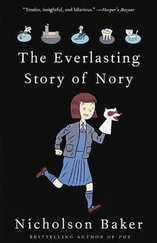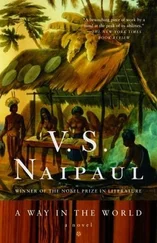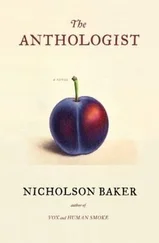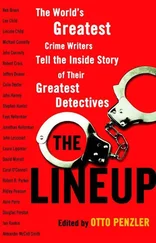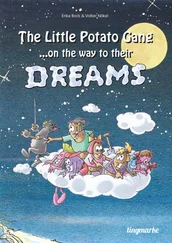Nicholson Baker - The Way the World Works
Здесь есть возможность читать онлайн «Nicholson Baker - The Way the World Works» весь текст электронной книги совершенно бесплатно (целиком полную версию без сокращений). В некоторых случаях можно слушать аудио, скачать через торрент в формате fb2 и присутствует краткое содержание. Год выпуска: 2012, Издательство: Simon & Schuster, Жанр: Публицистика, Критика, на английском языке. Описание произведения, (предисловие) а так же отзывы посетителей доступны на портале библиотеки ЛибКат.
- Название:The Way the World Works
- Автор:
- Издательство:Simon & Schuster
- Жанр:
- Год:2012
- ISBN:нет данных
- Рейтинг книги:4 / 5. Голосов: 1
-
Избранное:Добавить в избранное
- Отзывы:
-
Ваша оценка:
- 80
- 1
- 2
- 3
- 4
- 5
The Way the World Works: краткое содержание, описание и аннотация
Предлагаем к чтению аннотацию, описание, краткое содержание или предисловие (зависит от того, что написал сам автор книги «The Way the World Works»). Если вы не нашли необходимую информацию о книге — напишите в комментариях, мы постараемся отыскать её.
), here assembles his best short pieces from the last fifteen years.
The Way the World Works
OED
Modern Warfare 2
Through all these pieces, many written for
, and
, Baker shines the light of an inexpugnable curiosity.
is a keen-minded, generous-spirited compendium by a modern American master.
The Way the World Works — читать онлайн бесплатно полную книгу (весь текст) целиком
Ниже представлен текст книги, разбитый по страницам. Система сохранения места последней прочитанной страницы, позволяет с удобством читать онлайн бесплатно книгу «The Way the World Works», без необходимости каждый раз заново искать на чём Вы остановились. Поставьте закладку, и сможете в любой момент перейти на страницу, на которой закончили чтение.
Интервал:
Закладка:
Nicholson Baker
The Way the World Works
Foreword
Back in 1982, when I was just getting going as a writer, William Whitworth, the editor of The Atlantic, called to say that he was putting together a 125th-anniversary edition and he wondered if I had anything short to contribute to the front of the magazine. Flattered, I wrote something that tootled around in a ruminative way called “Changes of Mind.” Other pieces followed, and I allowed myself to believe that I was helping to bring back the personal essay, which had fallen out of fashion. Some of my heroes were G. K. Chesterton, Christopher Morley, Alice Meynell, William Hazlitt, William James, and Samuel Johnson. By 1996 I had enough for a collection, The Size of Thoughts. Now it’s 2012 and time, it seems, for a second and slightly heftier accrual. The first section of the book, LIFE, is made up of autobiographical bits arranged more or less chronologically; then come some meditations on READING and being read to. After that I tell the story of how I sued a public LIBRARY and talk about the beauties and wonders of old NEWSPAPERS; and then comes some TECHNO-journalism and writings on WAR and the people who oppose it, followed by a LAST ESSAY that I wrote for The American Scholar on mowing the lawn. I like mowing the lawn, and it didn’t seem quite right to end the book with an impressionistic article on my unsuccessful efforts to master a series of violent video games. You’ll find things in here about kite string, e-readers, earplugs, telephones, coins in fountains, paper mills, Wikipedia, commonplace books, airplane wings, gondolas, the OED, Call of Duty , Dorothy Day, John Updike, David Remnick, and Daniel Ellsberg. In a number of places I’ve changed a title, or restored a sentence or a passage that was cut to make something fit. I hope you run into a few items that interest you.
My thanks go to Jofie Ferrari-Adler at Simon & Schuster, and to all the careful, kind editors I’ve worked with on these pieces, especially Deborah Garrison, Henry Finder, Alice Quinn, and Cressida Leyshon at The New Yorker , Anne Fadiman and Sandra Costich at The American Scholar , Robert Silvers and Sasha Weiss at The New York Review of Books , Jennifer Scheussler and Laura Marmor at the New York Times , and James Marcus at Harper’s .
Life
String
I was two years old when we moved to Rochester, New York. We lived in an apartment on a street that was only a block long, called Strathallan Park.
The shortness of the street was perfect, I thought: it had two ends and not much middle, like a stick that you pick up unconsciously to tap against a fence, or like one of those pieces of string that the people in the food department at Sibley’s, the downtown department store, cut from wall-mounted spools to tie up a box holding a small cake. You could run from our end of the street, near University Avenue, all the way to East Avenue, the grander end, without having to stop to catch your breath, or almost, and when you reached the far corner and turned, panting, with your hands on your knees, you could look down the whole straight sidewalk, past the checkering of driveways and foreshortened snippets of lawn to where you had begun. Everything on my street was knowable by everyone at once.
A few of the lawns along Strathallan Park were, though small, fastidiously groomed — they were bright green and fluffy, and they were edged as well: using a blunt-bladed manual cutter at the end of a push pole, the lawn tenders had dug narrow, almost hidden troughs or gutters in the turf next to stretches of sidewalk and along walkways, outlining their territories as if they were drawing cartoons of them. The edge gutters looked neat, but they could wrench the ankle of a small-footed person who stepped wrong, and they held dangers for tricycle traffic as well: if you were going at top speed, trying to pass another tricyclist on the left, with your knees pumping like the finger-knuckles of a pianist during the final furious trill of his cadenza, you could catch your wheel in a gutter and flip or lose the race.
Some parts of the Strathallan sidewalk were made of pieces of slate that sloped up and down over the questing roots of elm trees (one elm had a mortal wound in its trunk out of which flowed, like blood, black sawdust and hundreds of curled-up larvae), and some parts of the sidewalk were made of aged concrete, with seams cut into them so that they would crack neatly whenever a growing tree required it of them. These seams made me think of the molded line running down the middle of a piece of Bazooka bubble gum, which you could buy in a tiny candy store in the basement of an apartment building near where we lived: the silent man there charged a penny for each piece of gum, machine-wrapped in waxed paper with triangular corner folds. It had a comic on an inner sheet that we read with great interest but never laughed at. Or, for the same penny, you could buy two unwrapped red candies shaped like Roman coins. These were chewy, and they let light through them when you held them up to the sun, but a red Roman coin couldn’t do what a hard pink block of Bazooka gum could as it began to deform itself under the tremendous stamping and squashing force of the first chew: it couldn’t make your eyes twirl juicily in their sockets; it couldn’t make all your saliva fountains gush at once.
When you pulled part of a piece of well-chewed gum out of your mouth, holding the remainder in place, it would lengthen into drooping filaments that were finer and paler than thread. And I was thinking a fair amount about thread and string and twine in those Strathallan years— twine is a beautiful word — about spools of thread, especially after I got the hang of the sewing machine, which I drove as you would a car, listening for and prolonging the electric moan of the foot pedal just before the machine’s silver-knobbed wheel began to turn, and steering the NASCAR scrap of fabric around a demanding closed course of loops and esses. When you floored the Singer’s pedal, the down-darting lever in the side of the machine rose and fell so fast that it became two ghost levers, one at the top of its transit and one at the bottom, and the yanked spool on top responded by hopping and twirling on its spindle, flinging its close-spiraled life away.
Sometimes my mother let me take the spool off the sewing machine and thread the whole living room with it, starting with a small anchor knot on a drawer handle and unreeling it around end tables and doorknobs and lamp bases and rocking-chair arms until everything was interconnected. The only way to get out of the room, after I’d finished its web, was to duck below the thread layer and crawl out.
I was wary of the needle of the sewing machine — my father told me that a sewing machine needle had once gone through my grandmother’s fingernail, next to the bone, and I didn’t like the long shiny hypodermic needles, called “boosters,” at Dr. Ratabaw’s office one block over on Goodman Street. One morning, just after I took a bath, wearing only a T-shirt and underpants, I climbed down into the lightwell of a basement window in the back of our house, and in so doing disturbed some yellow jackets that had built a set of condominiums there, and I got several dozen short-needled booster shots at once, and saw my mother’s arm set upon by outraged wasp abdomens that glinted in the sun as she brushed them off me. I tried to be braver at Dr. Ratabaw’s office after that.
So that was my first street, Strathallan Park. Everything was right nearby, but sometimes we traveled farther afield, to Midtown Plaza, for instance, where I saw a man open a door in the Clock of Nations and climb inside its blue central pillar. There were thick tresses of multicolored wire in the Clock of Nations, each wire controlling a different papier-mâché figure, all of whom danced back then, in the days before Midtown Plaza went into a decline and the clock froze. We bought a kite and some string at Parkleigh pharmacy and took them with us to the greensward behind the Memorial Art Gallery, where there were three or four enormous trees and many boomerang-shaped seedpods that rattled like maracas. There wasn’t enough wind there to hold the kite up, so we took it to a park, where it got caught in a tree and tore. My father repaired it on the spot, and even though it was now scarred, heavy with masking tape, we managed to get it aloft again briefly before it was caught by the same tree a second time. That was the beginning of my interest in kite flying.
Читать дальшеИнтервал:
Закладка:
Похожие книги на «The Way the World Works»
Представляем Вашему вниманию похожие книги на «The Way the World Works» списком для выбора. Мы отобрали схожую по названию и смыслу литературу в надежде предоставить читателям больше вариантов отыскать новые, интересные, ещё непрочитанные произведения.
Обсуждение, отзывы о книге «The Way the World Works» и просто собственные мнения читателей. Оставьте ваши комментарии, напишите, что Вы думаете о произведении, его смысле или главных героях. Укажите что конкретно понравилось, а что нет, и почему Вы так считаете.
